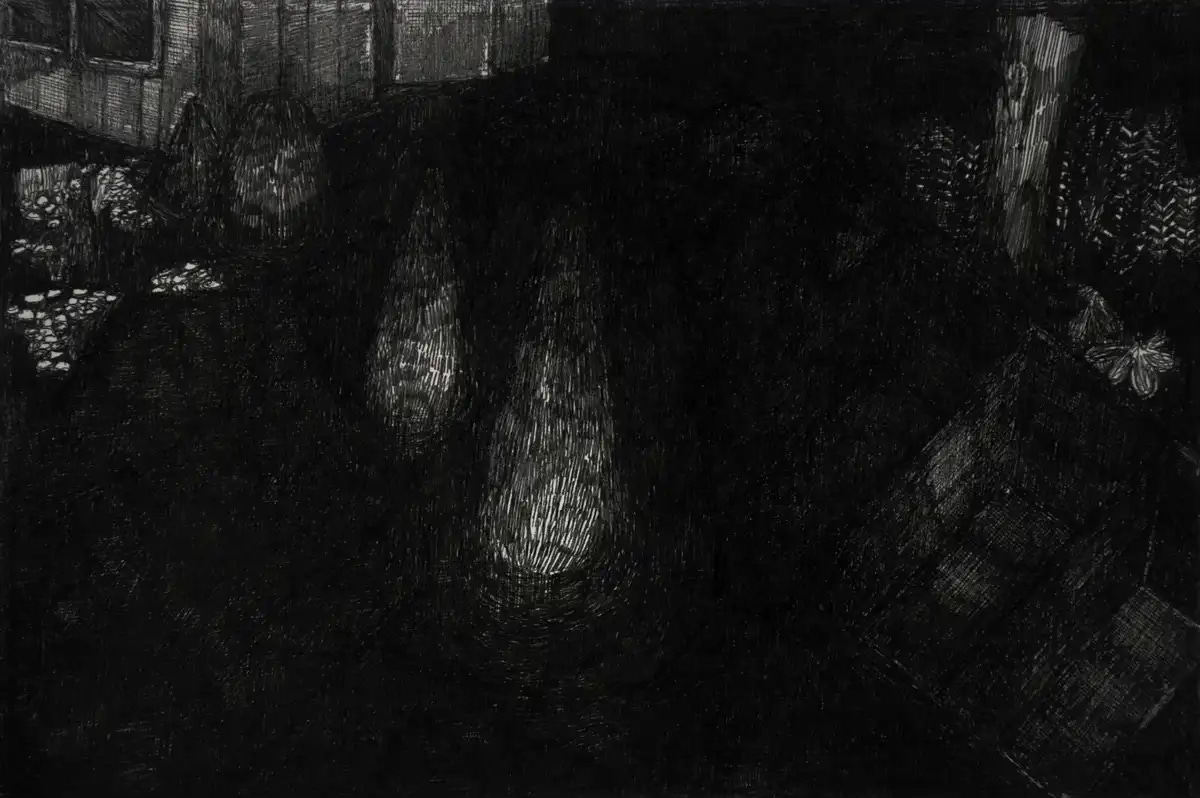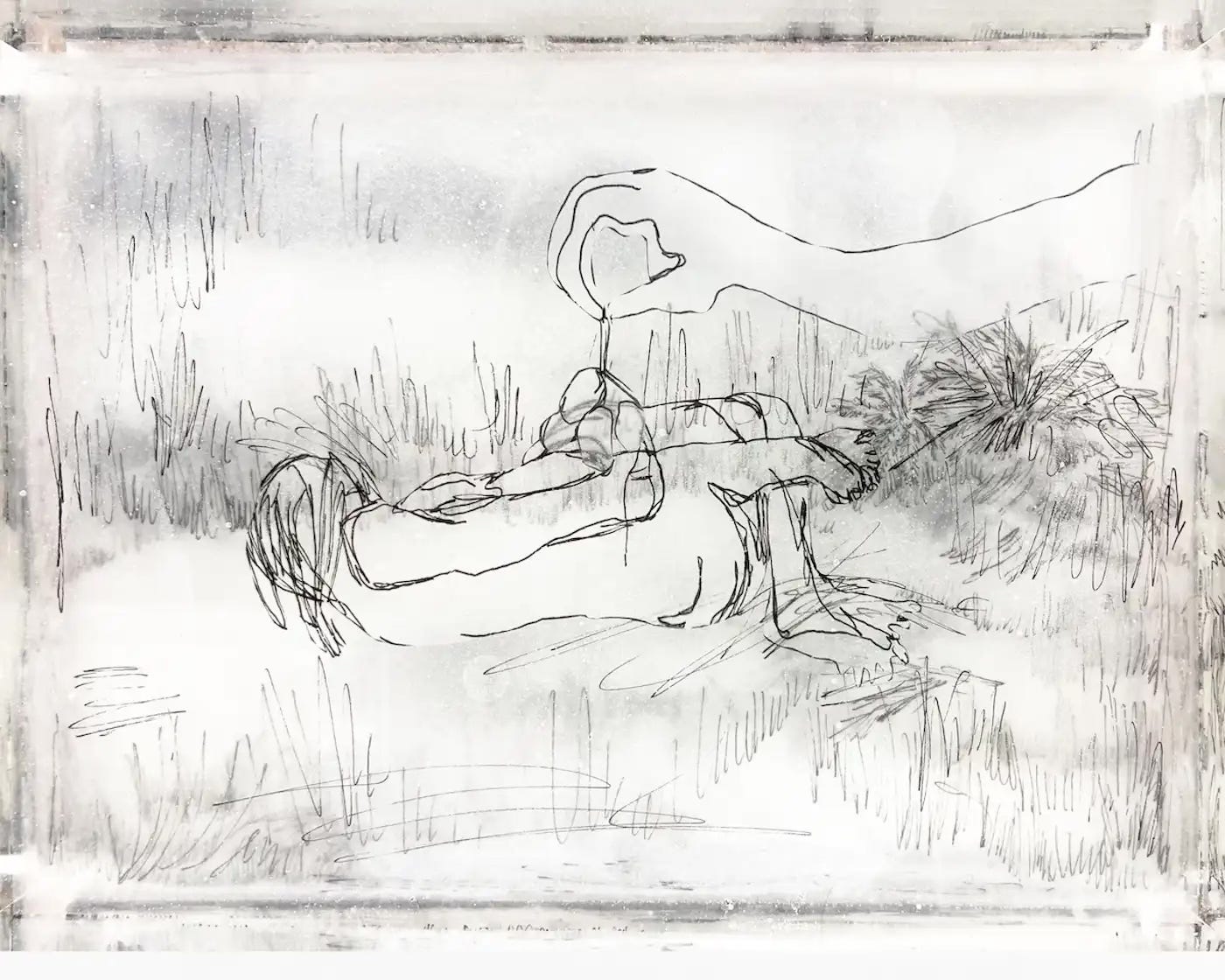Rozemarijn Westerink draws in black, refusing distractions of color and erasure. A single ink line, then another, then the next until she fills the paper. She builds her drawings slowly. Adds a layer, then another, adds a memory, adds a sound.
“What makes you want your drawings move?” I asked.
Rozemarijn: “My stop-motion films come directly from the drawings I create. Drawing is for me the most honest form of making art. It’s as intimate as it is raw. Observations, memories and dreams I transform into pen drawings, sometimes so intense that the white paper almost disappears.
I only draw with pen and ink; Indian ink is a material which is irreversible and has only one color: black. I very much like the restrictions this material brings with it; they make the rules I created for myself: I don’t have to think about which colors to use, I don’t have to rethink my material. Within these rules I can do whatever I want.
In 2006 I started making animation films. I always dreamt of it earlier, but it really took off out of practical reasons. I went to Japan for a residency and couldn’t bring many materials with me. I decided to put my drawings together into moving image and my first stop-motion films were born and shown in Tokyo.
After this I won the Buning Brongers Prize for drawing and painting, which was surprisingly nice because I had submitted moving image, a video work.
Since 2015 I decided to restrict myself regarding the subject of my work as well; in my drawings I now focus on drawing the landscape – particularly the garden – and, more recent, the female body. Through this, I explore how a personal experience or the sensation of a specific moment can become universal and recognizable to the viewer.
To take this a step further, I would like the viewer to really step into my world by creating film. How does it feel to be captured by a hand-drawn image in motion, while hearing sound at the same time? Can I come closer to the viewer this way? Can we interact by sharing a same association provoked by a drawing? Film also gives us the possibility to experience the perception of time, this is an interesting aspect for me to play with as well.
I create my films using stop-motion, capturing each frame individually. For example, over 10.000 photographs construct Rêves en Ligne, a film I made for the Zadkine Museum in Paris, with a duration of 10:30 minutes. By employing this technique, I choose a slow and simple way to produce moving images, staying as close as possible to the act of drawing. I build my film settings layer by layer, much like I create a drawing, erasing nothing. This approach allows viewers to follow the drawing process closely.
The films’ soundtracks I create by using primarily analogue equipment, like a 4-track recorder. As it stays as close to the drawing and filming process as possible, bringing the drawn worlds to life.
From these films I develop a more spatial form of drawing, in which I like to incorporate elements from my animations into new works. Therefore, I preserve the drawn paper figures that are featured in my films, in cast resin or ceramics. As these works capture a moment frozen in time, allowing the viewer to observe them from different angles.”





